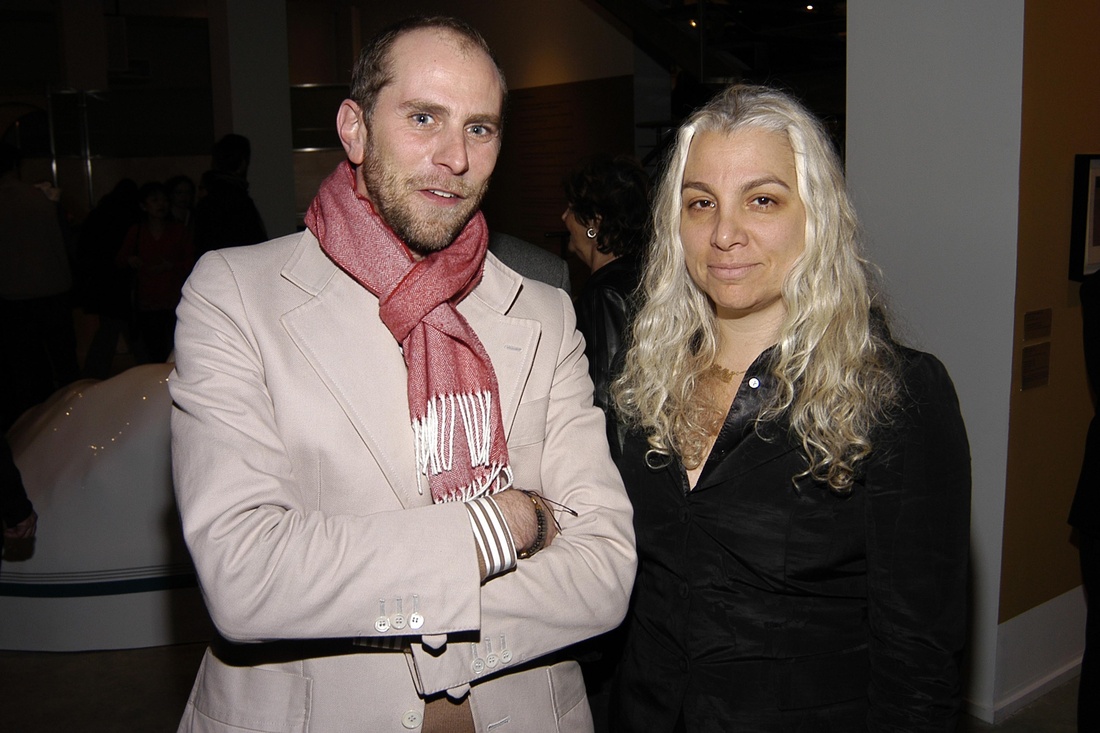Andrea Rosen Closing Permanent Gallery Space, Will No Longer Represent Living Artists
 NEW YORK CITY, NEW YORK - JANUARY 25: Patrick Fleming and Andrea Rosen attend Andrea Zittel Opening at New Museum of Contemporary Art on January 25, 2006 in New York City. (Photo by Erik T. Kaiser/Patrick McMullan via Getty Images)
NEW YORK CITY, NEW YORK - JANUARY 25: Patrick Fleming and Andrea Rosen attend Andrea Zittel Opening at New Museum of Contemporary Art on January 25, 2006 in New York City. (Photo by Erik T. Kaiser/Patrick McMullan via Getty Images)
In a move that will reverberate through the art world, established Chelsea gallerist Andrea Rosen announced via email on Tuesday night that she will no longer represent living artists and will “no longer have a typical permanent public space.” Rosen said the transition will take place over the coming months.
The announcement was buried deep within a letter in which Rosen first explained that she would be joined by David Zwirner in co-representing Felix Gonzalez-Torres’s work, which has formed a centerpiece of her gallery’s program since 1990.
Rosen says that her initial conversations with Zwirner about sharing the late artist’s estate began in November as a discussion of “quite a typical collaboration of two galleries.” However, she says a “secondary internal dialogue” soon emerged.
“I privately came to realize, parallel to our discussion, that having David Zwirner Gallery share in the responsibility to the work of Felix Gonzalez-Torres or the idea of collaborating with other galleries, freed me to think about what is my true responsibility to our times,” she writes. “What is the most productive role that I can play, not only for Felix but for the role of my gallery, my role in the art world, and the world at large?” It was mulling that question, as Rosen explains, that led her to decide to shutter the gallery’s permanent public space.
Rosen opened her eponymous gallery in 1990, when she was just 27, with an exhibition of Gonzalez-Torres’s work. That first exhibition in 1990 “set the pace and agenda for the entire program of the gallery,” Rosen wrote in her mission statement for the gallery. It was “conceptually rigorous, fully aware of the responsibility of putting one's subjectivity in the public realm, and unafraid of actually being beautiful.”
At the time, her space was nestled into Soho’s storied Bakery Building, at 130 Prince Street, which she shared with Luhring Augustine, Tony Shafrazi, and Perry Rubenstein, amongst other galleries that have since closed or led quieter lives since the 1990s.
Twenty-seven years have passed since then, and Rosen’s gallery has moved, expanded, and multiplied its artist list in step with the growth of the New York art world. However, her core tenets for running the gallery haven’t changed—to show artists who engage with contemporary society and culture and to support their practices holistically.
Today, her stable includes the rigorous, sometimes baldly political practices of biennial favorites like David Altmejd, Josephine Meckseper, Mika Rottenberg, Andrea Zittel, Ryan Trecartin, and more.
Driving much of this development has been Rosen’s commitment to Gonzalez-Torres himself—an artist who embedded identity politics and content related to the AIDS crisis and gay rights into his now-legendary sculptures until his 1996 death from AIDS—and the inspiration he has provided in expanding the program to new artists.
Given Rosen’s lasting relationships with artists and the admiration with which her peers have viewed her approach as a gallerist, the closure of her gallery is surprising. Rosen herself notes that it’s not entirely as she would have imagined, “My wish would have been to try to incorporate the depth of my growing intentions within my current immersive and beloved structure,” she writes.
The cultural and political climate has however changed in ways that likely could not have been imagined when Rosen began discussing a collaboration with Zwirner. And she says, “I have come to realize that in order for me to be fearlessly open and responsive to our times and the future, requires mobility, flexibility and the willingness to change.”
“I realized that the only way to be truly available and in order to set an example for my daughter of what it means to try to be an active, kind and connected citizen, or to try and live without ethical compromise requires time and the simplification of my life.”
Going forward, Rosen writes that she plans “to stay connected with each of [her current stable of living artists’] careers as well as help in any way that I can in this transition.” Beyond that, the co-representation of the Felix Gonzalez-Torres estate with David Zwirner, and deeper work with the Felix Gonzalez-Torres Foundation, the gallerist has given little direct indication of what her gallery will evolve into.
“While it will take a new form,” she writes, “I am one of those rare lucky people who loves and considers my work to be the vehicle for growth and contribution.”
—Alexxa Gotthardt

No comments:
Post a Comment